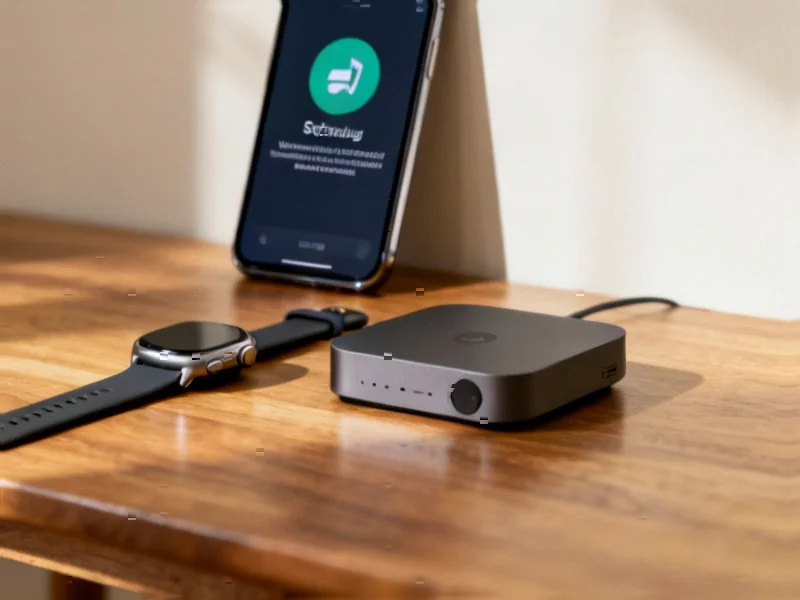According to GSM Arena, Samsung has released the stable Android 16-based One UI 8 update for two Galaxy A series smartphones – the Galaxy A06 4G and Galaxy A07 4G. The Galaxy A06 4G update carries firmware version A065FXXU7CYJ8, while the Galaxy A07 4G uses version A075FXXU1BYJA, with both requiring approximately 2.3GB of download space. The rollout is currently limited to the Philippines, Thailand, Indonesia, and Malaysia, with broader availability expected soon. Interestingly, the Galaxy A06 4G ships with the September 2025 Android security patch, while the A07 4G receives the more current October 2025 patch. This regional deployment strategy reveals Samsung’s evolving approach to budget device support.
Table of Contents
- Budget Device Software Strategy Evolution
- Security Patch Inconsistencies Raise Questions
- Regional Rollout Strategy and Market Prioritization
- Large Update Size Presents Accessibility Challenges
- Competitive Implications in Budget Segment
- Future Update Expectations and Long-Term Support
- Related Articles You May Find Interesting
Budget Device Software Strategy Evolution
Samsung’s decision to bring Android 16 to these entry-level models represents a significant shift in how manufacturers approach software support for budget devices. Historically, affordable smartphones received minimal software updates, if any, creating a two-tier system where premium devices enjoyed extended support while budget users were left behind. Samsung’s move with the Galaxy A06 and A07 suggests the company recognizes that consistent software experiences across price tiers are becoming increasingly important for brand loyalty and ecosystem cohesion. This is particularly crucial as Samsung’s Galaxy ecosystem expands to include more connected devices and services that benefit from uniform software foundations.
Security Patch Inconsistencies Raise Questions
The differing security patch levels between the two devices—September 2025 for the A06 versus October 2025 for the A07—reveals potential challenges in Samsung’s update pipeline. While both devices receive the same major One UI 8 features, the security patch discrepancy suggests these models may be on different update tracks or have different teams managing their software releases. This inconsistency could create consumer confusion and potentially undermine the security benefits of the update. For users concerned about device protection, understanding why identical-generation devices receive different security patch levels becomes important, especially when both updates are being delivered simultaneously in the same markets.
Regional Rollout Strategy and Market Prioritization
Samsung’s decision to launch first in Southeast Asian markets—Philippines, Thailand, Indonesia, and Malaysia—reflects the strategic importance of these regions for the company’s budget segment. These markets have shown strong adoption of 4G devices and represent growth opportunities where Samsung competes aggressively with Chinese manufacturers. The phased rollout approach allows Samsung to monitor stability and performance before expanding to more demanding markets. However, this strategy also means users in other regions must wait weeks or months for the same update, creating fragmentation within the same device models across different territories. This staggered approach, while practical from a technical standpoint, can frustrate users who see others receiving updates they cannot access.
Large Update Size Presents Accessibility Challenges
The 2.3GB download requirement for both devices presents practical challenges for users in emerging markets where data costs remain significant and reliable Wi-Fi access isn’t universal. For context, 2.3GB represents a substantial portion of typical monthly data plans in many of the initial rollout countries. This creates a barrier to adoption that could delay security and feature improvements for users who cannot afford the data expenditure or lack consistent high-speed internet access. Manufacturers face a difficult balancing act between delivering comprehensive updates and ensuring they’re practically accessible to their target audience. The size also suggests Samsung isn’t employing delta updates or more efficient patching mechanisms that could reduce download requirements for these budget-conscious users.
Competitive Implications in Budget Segment
Samsung’s commitment to bringing current Android versions to its budget lineup creates pressure on competitors in the fiercely contested entry-level market. Chinese manufacturers like Xiaomi and Realme have typically been more aggressive with software updates in this segment, making Samsung’s move a strategic counter. However, the security patch inconsistency and large download size represent areas where competitors could potentially differentiate. As Galaxy A06 and Galaxy A07 devices compete in crowded marketplaces, consistent and well-managed software support could become a key differentiator beyond just hardware specifications and pricing.
Future Update Expectations and Long-Term Support
This Android 16 rollout raises questions about how many major updates these budget devices will ultimately receive. While Samsung has improved its update commitment across all price tiers, the company hasn’t been as transparent about long-term support for entry-level models compared to its flagship lines. The firmware version numbering suggests these devices have received multiple updates already, but consumers would benefit from clearer communication about future update roadmaps. As security and privacy concerns grow, even budget device users are becoming more aware of the importance of regular software maintenance beyond just feature additions.




